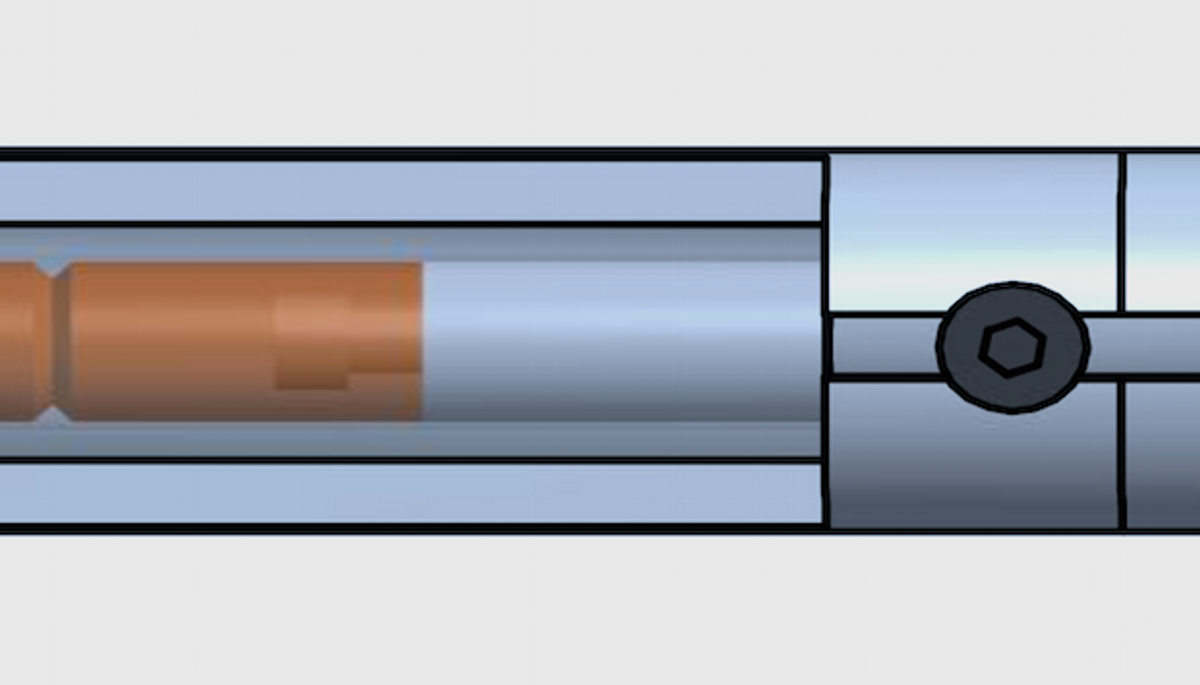Robots tend to spend a lot of the time broken. This isn’t just because they break a lot (although they do break a lot), but also because they’re usually difficult and often expensive to fix quickly. Electronics in general is also difficult and expensive to fix, which is why we have fuses: sacrificial components that take one for the team when something goes wrong. At ICRA yesterday, we saw a similar idea intended to protect actuators from damage. This mechanical fuse takes things one step further, however, by being able to heal itself, making a broken robot just like new in a matter of hours.
The way a fuse of any sort works is that it operates as the weakest component in a system, such that if that system gets subjected to a level of stress beyond what it’s supposed to deal with in normal operation, the fuse blows up first, stopping the system before any other component gets damaged. A mechanical fuse works in pretty much the same way. Inside (say) an actuator, the mechanical fuse is just a thing that’s easy to fix, and weaker than every other thing in the actuator, so that if something’s going to break, it’ll be that first.


What’s clever about this research is the use of a fuse that heals itself, so that you don’t have to worry about the difficulty or expense of replacing it. Researchers from Vrije Universiteit Brussel (VUB) in Belgium are using what’s called a Diels–Alder (DA) polymer as a component in a prototype series elastic actuator. They chose that material because it’s strong (and the strength can be adjusted), it heals under relatively low heat (between 70º C and 130º C), and most crucially, because it doesn’t lose strength due to the healing process: the healed actuator is just as strong as it was before it broke, and you can keep on breaking and healing it over and over and it doesn’t end up any worse for wear.
In the prototype actuator, the mean fracture force of the mechanical fuses used during testing varied from about 50 to 110 newtons, and the standard deviation for refracturing the fuses over multiple tests was under 10 newtons. The researchers are confident that these variations could be reduced drastically in production. For the prototype system, the broken fuses were removed and heated in an oven at 120º C for 170 minutes to fix them, but in a deployed system, the heating could be integrated to give the robot autonomous control over self-repair.

The researchers also developed a soft pneumatic actuator which can heal itself from inciscions, perforations, and deformations from overpressure. After 30 hours in an oven at 70º C, the actuator is as good as new, with no weak spots left over from previous injuries.
The obvious benefit here is the fast and and free(ish) self-healing of actuators, but that leads to a bunch of other benefits as well. Chief among them is probably the idea that if you become okay with your robot breaking itself sometimes, you then don’t have to massively over-engineer your robot to withstand unexpected potentially damaging loads. This could result in lighter, cheaper, more efficient, and less complex robots that break more often, but then heal themselves and keep right on going.
“Investigation of Self-Healing Compliant Actuators for Robotics,” by Seppe Terryn, Glenn Mathijssen, Joost Brancart, Guy Van Assche, Bram Vanderborght,and Dirk Lefeber from VUB was presented yesterday at ICRA 2015 in Seattle, Wash.
Evan Ackerman is a senior editor at IEEE Spectrum. Since 2007, he has written over 6,000 articles on robotics and technology. He has a degree in Martian geology and is excellent at playing bagpipes.



